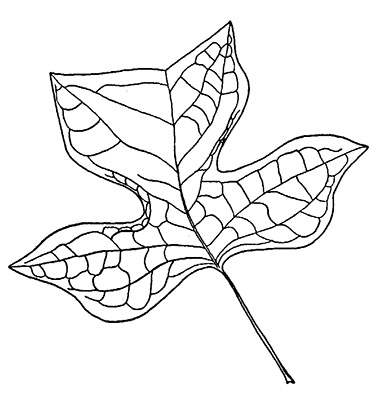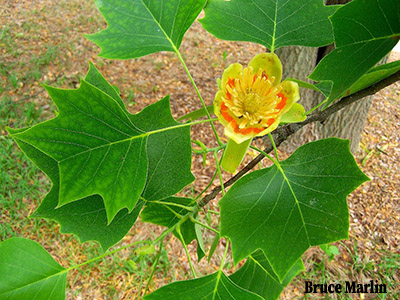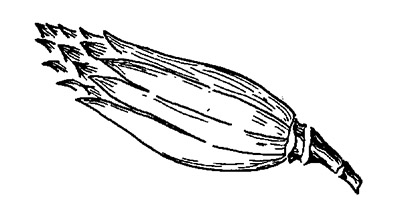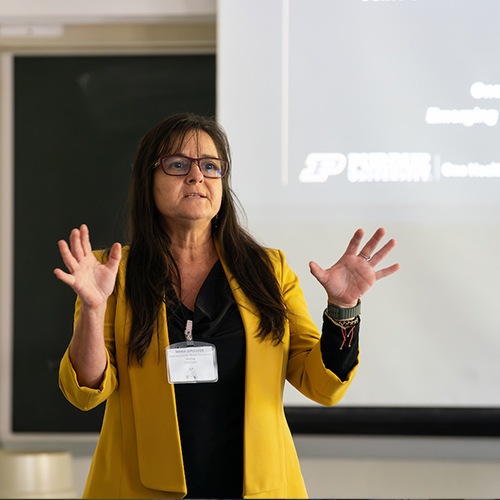Intro to Trees of Indiana: Tulip Tree
The classic and trusted book "Fifty Common Trees of Indiana" by T.E. Shaw was published in 1956 as a user-friendly guide to local species. Nearly 70 years later, the publication has been updated through a joint effort by the Purdue Department of Forestry and Natural Resources, Indiana 4-H, and the Indiana Department of Natural Resources, and reintroduced as "An Introduction to Trees of Indiana."
A printed copy of the full publication is available for purchase for $7 in the Purdue Extension Education Store. The field guide helps identify common Indiana woodlot trees.
Each week, the Intro to Trees of Indiana web series will offer a sneak peek at one species from the book, paired with an ID That Tree video from Purdue Extension forester Lenny Farlee to help visualize each species as it stands in the woods. Threats to species health as well as also insight into the wood provided by the species, will be provided through additional resources as well as the Hardwoods of the Central Midwest exhibit of the Purdue Arboretum, if available.
paired with an ID That Tree video from Purdue Extension forester Lenny Farlee to help visualize each species as it stands in the woods. Threats to species health as well as also insight into the wood provided by the species, will be provided through additional resources as well as the Hardwoods of the Central Midwest exhibit of the Purdue Arboretum, if available.
This week, we meet Tulip tree or Liriodendron tulipifera.
The state tree of Indiana, also known as the tulip poplar or yellow poplar, however, is actually more closely related to the magnolia family than the poplar family. It is easily identified by its large, simple tulip shaped leaves held alternately on long leaf stems. The leaves, which feature three lobes, including the top lobe which is widely notched in the middle, turn from glossy green to a golden yellow in the fall.
The bark on young trees is smooth and gray with streaks of white between the ridges, while the bark of older trees is gray-brown and features deep, long running ridges. The trunk is very straight and column-like as it grows toward the sunlight and the tree self-prunes lower branches.
In the spring, the tulip tree produces colorful green and yellow, tulip like flowers with an orange band at the base of each petal, which bloom in May or June, but are often found high up on the tree.
The cone-shaped fruit is a collection of winged seeds that resembles a small, dry pineapple, approximately two-inches in length, which sits upright on the branches.
Tulip trees, which grow 70 to 90 feet tall, are often among the tallest trees in Indiana woodland areas as they are shade intolerant and prefer to grow toward the light. They can often be found in woodlands as large as three to four feet in width on the trunk. Tulip trees prefer acidic, moist, well-drained soil, but can tolerate alkaline soil.
The natural range of the tulip tree is the eastern United States. Its western reach extends from spots in central Louisiana across the eastern edge of Missouri and Illinois up through Indiana and the southern part of Michigan, and reaches eastward across the gulf states and the panhandle of Florida. It can be found throughout much of the Atlantic coast, reaching northward to Pennsylvania, New York and Connecticut.
central Louisiana across the eastern edge of Missouri and Illinois up through Indiana and the southern part of Michigan, and reaches eastward across the gulf states and the panhandle of Florida. It can be found throughout much of the Atlantic coast, reaching northward to Pennsylvania, New York and Connecticut.
The Morton Arboretum warns that tulip trees are highly susceptible to ice damage and are marginally hard with weak wood and branch structure.
According to Finishing and Restoring Wood and Structures, yellow poplar is an abundant, fast-growing and fast-drying, easily worked hardwood timber species. This species accepts and holds paint well. It is intermediate in its rating for planning, shaping, turning and boring. It boasts a 12 percent moisture content and weighs in at 29.4 pounds per cubic foot.
intermediate in its rating for planning, shaping, turning and boring. It boasts a 12 percent moisture content and weighs in at 29.4 pounds per cubic foot.
Historically, large, old-growth trees of the species were used for interior millwork, general construction lumber and for aboveground exterior architectural applications like house and barn siding, fascia, soffits, corbels, windows and doors and trim.
According to the Wood Database, yellow poplar is commonly used for pallets, crates, upholstered furniture frames, paper and plywood. Poplar veneer also is used for a variety of applications.
Other Resources:
ID That Tree: Tulip Tree
Morton Arboretum: Tuliptree
Finishing and Restoring Wood and Structures: Yellow-Poplar Lumber for Exterior Architectural Applications in New Construction and for Historical Restoration, The Education Store
Purdue Arboretum Explorer
The Woody Plant Seed Manual, U.S. Forest Service
Purdue Plant Doctor
Native Trees of the Midwest, The Education Store
Shrubs and Woody Vines of Indiana and the Midwest, The Education Store
Investing in Indiana Woodlands, The Education Store
Forest Improvement Handbook, The Education Store
ID That Tree, Purdue Extension-Forestry & Natural Resources (FNR) YouTube playlist
Woodland Management Moment , Purdue Extension-FNR YouTube playlist






